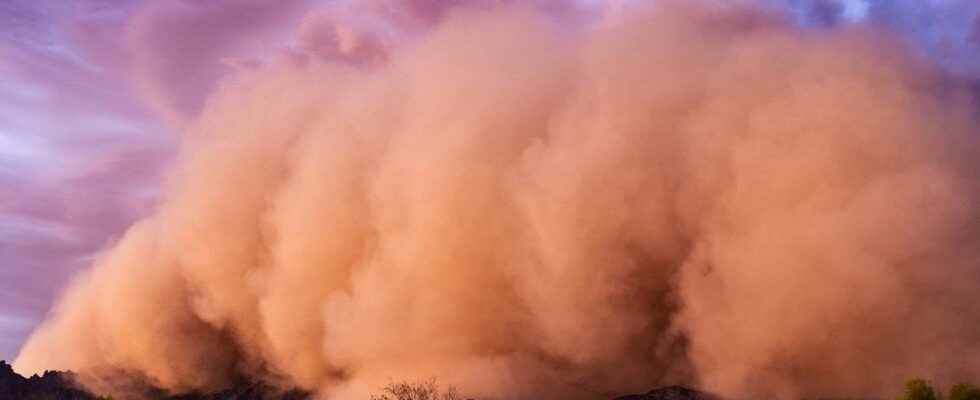An infectious disease, known as “valley fever” (valley fever, in English) is spreading at high speed in the American West. Where is she from ? Probably sandstorms.
You will also be interested
[EN VIDÉO] Interview 4/5: pollution, what health risks? With the increase in pollution levels, the question arises of its impact on human health. Each pollutant has different effects, some immediate and visible, others delayed and more insidious. In order to clarify the question, we interviewed Philippe Hubert, director of chronic risks at Ineris.
Fever, fatigue, cough, headache, pains muscles, if these symptoms resemble those of a fluin the desert American it may be a very different disease: the ” fever of the valley”. These mild signs usually last one to three weeks. However, they can also last for months and become chronic. In the most severe cases, the infection can lead to irreversible damage to lungs, and lead to the death of the patient. It is 5 to 10% of people affected who develop a chronic version damaging the lungs. About 1% of patients suffer even more serious consequences: the infection can spread to the nervous system (brain and spine), skin, joints and the bones.
Many scientists are convinced that the disease comes from the Coccidioides fungi present in the dust carried by the haboobsgigantic sandstorms common in the American desert. Other researchers believe, however, that the link between these storms of sand and the disease is not clearly established. As the University of Arizona points out in a article published in Nature, it is necessary to identify the origin of this “valley fever” because the cases are increasing every year. Some 20,000 cases were reported in 2019, the vast majority in California and Arizona.
Lack of weather records hampers study of the disease
In order to compare the frequency of occurrence of cases of patients with this fever, scientists need records weather report of the NOAA, the United States Atmospheric and Oceanic Administration. A windy weather phenomenon that carries sand can only be described as Sandstorm if the visibility has been less than 400 meters, which is very restrictive. The number of sandstorms recorded could be much higher than what the weather reports suggest, and this difference between the readings and the reality poses a problem for the study of the cases of “valley fever”. To know if the frequency of occurrence of the disease is correlated with sandstorms, it is necessary that each sandstorm is reported and recorded.
Researchers are also trying to understand why some soils in the desert harbor this fungus, and others do not. It would seem that soils on which burrowing animals reside, which dig the ground and live in burrows, have a higher risk of harboring this fungus. In the areas where these small mammals live, the ground is often covered with vegetation, which results in smaller sandstorms. Sandstorms are indeed much more massive on bare, entirely sandy soils. It would therefore seem that the fungus spreads mainly through small sandstorms, which are not necessarily recorded by the weather services.
It is therefore currently very difficult to correlate “valley fever” with certainty with sandstorms, since the smallest storms are not recorded. Moreover, research does not yet benefit from public funding because it is a very localized disease, and not spread over the whole territory. But, as the center that studies the disease at the University of California points out, sandstorms carry a large number of particles harmful to health, dangerous for our lungs. It is therefore necessary in any case to flee as much as possible from this weather phenomenon.
Interested in what you just read?
